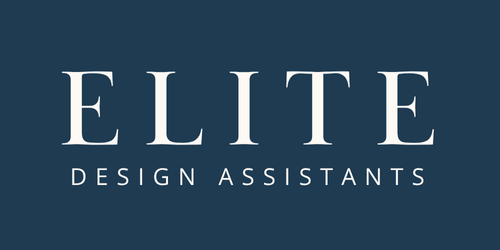Tips for a Smooth Client Onboarding Process
/Onboarding is the process of welcoming and familiarizing your new client with your company and the project journey ahead. After signing the contract, it's the first point of in-depth contact, so it's time to anticipate needs and exceed expectations. The onboarding process is all about forging a relationship with your client. They want to feel heard, informed, and taken care of, throughout the project process. While many interior design clients may not be repeat customers, their experience with you from the earliest phases will define your company's reputation and also unlock the potential of word-of-mouth marketing.
At a glance, a successful client onboarding process:
keeps competitors at bay
gives you the opportunity to upsell or cross-sell services
helps you set expectations and avoid scope creep
allows you to build a loyal client community
provides insights into how to keep improving your business methods
Now, let’s look at several ways you can ensure a smooth client onboarding process.
Get to know the client and personalize their journey
Ask your client to answer a short online questionnaire to identify their pain points. Organize a meeting with the team to introduce yourselves. This is a personal touch that will facilitate future communication and demonstrate your commitment to the project. Follow up with a welcome email to your client to tell them how much you are looking forward to working with them and briefly outline the next steps that were discussed in the meeting.
Avoid information overload
While it’s vital to be transparent and make information accessible to the client, the goal is to streamline the process and facilitate the experience. So walk them through the main points and give them access to a Client Dashboard, where they can refer back to information like the contract, process outline, design options, and anything else that may be relevant. This will reduce unnecessary back and forth, give clients peace of mind, and prevent oversights that can lead to unmet expectations as the project progresses.
Include visual and interactive material
In the same spirit as the previous point, you can make the experience lighter and more enjoyable by incorporating different forms of media and interaction. Having videos on your website and social media allow clients to know you and understand better how you work. Consult a UX Design pro to fine-tune the format and functionality of things you send to clients: questionnaires, documents, inspiration images for feedback, or furniture options.
Stay available
Although you need to have a defined scope of work that includes a limited number of site visits and meetings, it’s important that clients can count on you to respond in a timely manner and resolve their concerns. That excellent service is one of the aspects that will have the greatest impact on the overall feeling and memory of the client’s experience. And it's what they’ll talk about when they recommend you to their family and friends.
Train and communicate with your teammates
The first step of onboarding is to be clear about who will be responsible for each step of the process. Everyone on your team should understand their role in order to keep things flowing, avoid redundant work and communications with the client, and so that no detail falls through the cracks. This kind of professionalism shines through to clients.
Celebrate small victories
Even if clients are well-informed, the interior design project process often turns out to be more complex and stressful than one might imagine. That's why it's so important to point out and celebrate project milestones with them along the way. This good energy will come across in your communication and site visits, helping to make the journey more enjoyable and convey confidence in the progress.
Review your onboarding practices
Be sure to write down all the steps you want to include in your client onboarding process. It should be detailed enough to be able to hand this process off to someone who is able to execute it. Put the process in a neat document, so that you can make any revisions over time and simply go through the steps each time a new client comes on board.
The chances of maintaining a positive relationship with a client are infinitely higher when you conduct a thorough onboarding procedure. While creating a successful onboarding plan may require some work upfront, it will ultimately save your team time and make your business run more smoothly.
xx, Danae









